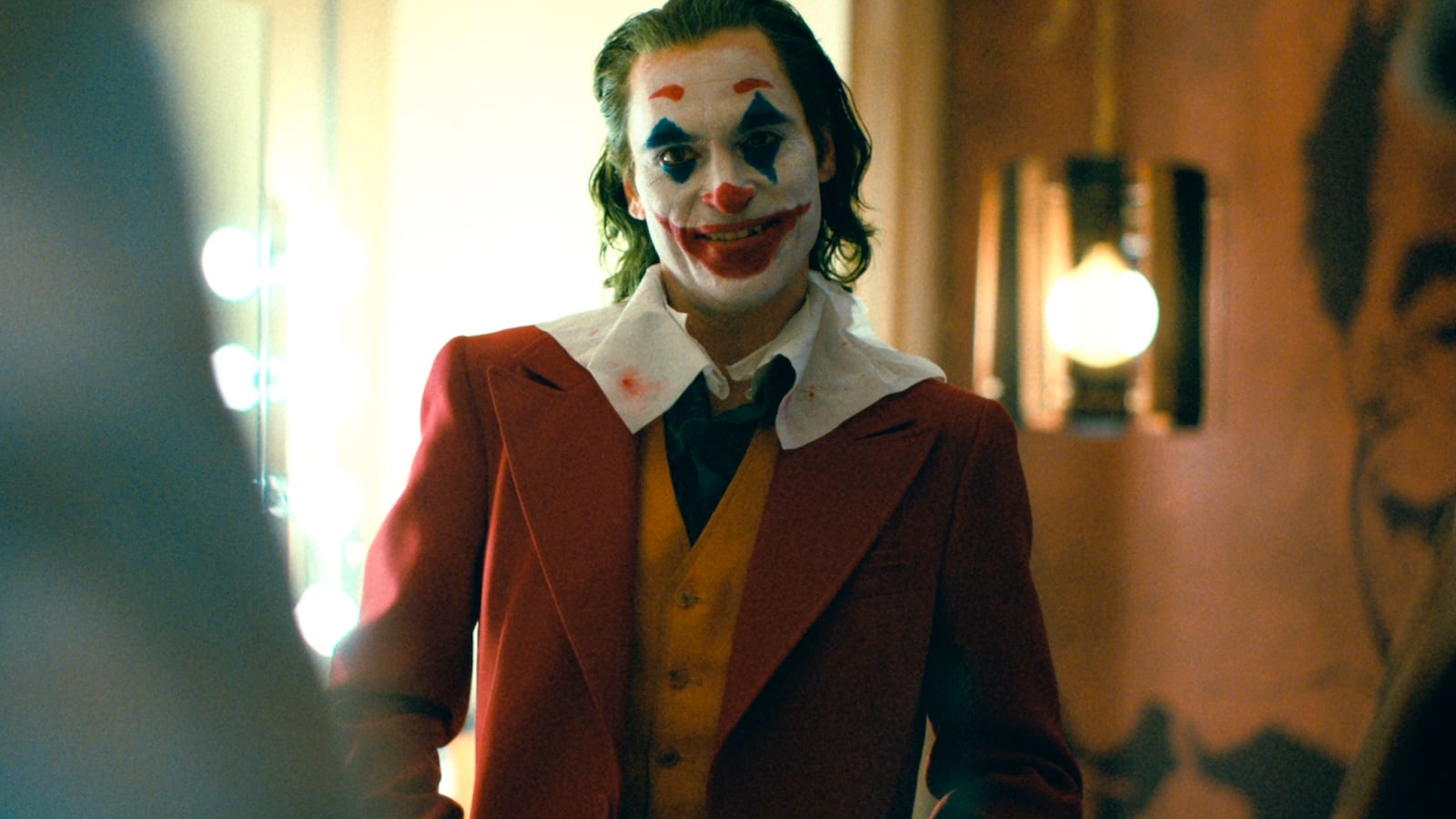VENICE, Italy—Joaquin Phoenix’s Arthur Fleck, the mentally-ill antagonist at the center of Todd Phillips’ Joker, is without question the most deranged version of the DC supervillain to ever hit the screen.
“For me, the attraction to make this film and this character was that we were going to approach it in our own way,” Phoenix explained at the Venice Film Festival. “So for me, I didn’t refer to past interpretations of the character.”
According to director Todd Phillips, he and Phoenix met six months prior to shooting to design the character, his look, and his laugh. But it was the actor’s dramatic weight loss—a reported 52 pounds—that really made things click.
“The first thing for us was the weight loss—I think that’s really what I started with. And, as it turns out, that then affects your psychology. You start to go mad when you lose that amount of weight in that amount of time,” said Phoenix. “There’s a book that I read about political assassins and would-be assassins that I thought was really interesting, and kind of breaks down the different types of personalities that do those sorts of things.”
Another helpful aide in locating the character was Fleck’s journal/joke book, filled with his nihilistic musings on the many absurdities of life.
“Very early on in the rehearsal, I was given the journal that he had—his journal and joke diary. And that was really helpful, because I had been there for a couple of weeks and wasn’t sure how I was going to start, and Todd sent this [empty] journal,” he recalled. “I didn’t know what to write, so I asked [Todd] for some suggestions, and after a few days, I ignored his suggestions and suddenly it was coming out. It became a really important part of the discovery of the character at that time.”
Phoenix repeatedly stressed that it was important for him to maintain the “mystery” of the character, and that he and Phillips engaged in a collaborative process where “throughout the course of shooting, every day we were discovering new aspects to his character and shades to his personality up until the very last day.”
And then there was the laugh—which in this Joker’s case is an uncontrollable, hyena-like shriek, delivered at the most inopportune times.
“Before I even read the script, Todd came over and talked me through what he wanted out of this character and this movie, and he showed me some videos, and he described the laughter as something that was almost painful,” offered Phoenix. “And so ultimately, I think Joker is a part of him that’s trying to emerge, and I think that was a really interesting way of looking at this laugh…It felt like a new, fresh way of looking at it. But honestly, I didn’t think that I could do it. I would practice alone and then asked Todd to come over to audition my laugh, because I felt like I had to do it on the spot and in front of somebody else. It took me a long time.”
Phillips says his Joker was influenced by character studies of the ‘70s, including Taxi Driver, The King of Comedy, Serpico, and One Flew Over the Cuckoo’s Nest. But more so than those, the 1928 silent film The Man Who Laughs served as an important inspiration for director and star.
And though some may see the damaged Fleck as a “tragic” character, Phoenix begs to differ.
“I was interested in the light of Arthur, for lack of a better word,” he said. “It wasn’t just the torment; it was his struggle to find happiness, to feel connected, to find the warmth and love—that’s the part of the character I was interested in and worth exploring.”







